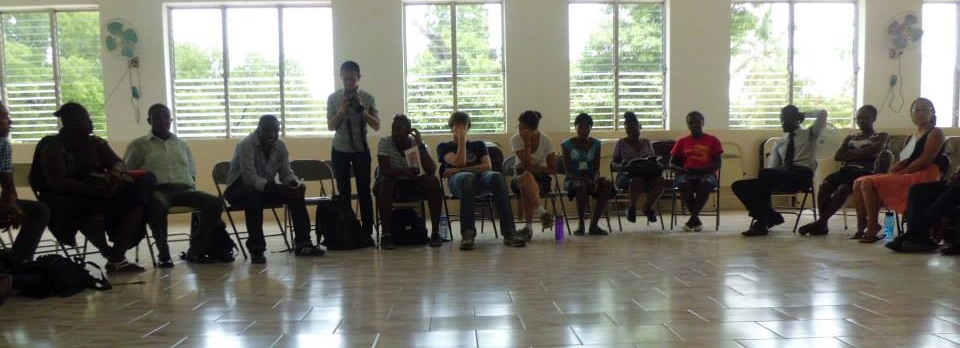|
|
||||
|
|
The Nagasawa Family Photos June, 2014: Mako in Haiti and the Dominican Republic
My condensed trip summary to supporters and friends can be found here. Also, I wrote a poem about this trip, called "Sweat".
Tuesday, June 10th We left Leogane and went to Port-au-Prince. Below are scenes from the city. Above is a wooden carving of a famous Haitian statue representing the freedom won by the Haitian Revolution started in 1791. The Statue of the Unknown Maroon is located in Port-Au-Prince. The government of Francois Duvalier built it as a reminder that Haiti's struggle for independence was started by blacks ("Maroons") and preceded that of the Europeanized Free Coloreds who later became the country's elite class.
In Port-au-Prince is a seminary with the acronym STEP. Here we met the Micah Scholars, a cohort being supported and trained by Haiti Partners in a biblical vision of women's rights and children's rights. They are an inspiring bunch. All are directly involved in some kind of work involving social justice or community development. Many are engaging the child servitude "restavec" issue.
This is the seminary's library.
Then we went to the mountains above Petion-ville in Port-au-Prince. This is where Haiti Partners set up their flagship Children's Academy, a beautiful school, along with a masonry business and a bakery that both train and employ local Haitians in order to financially support the school.
These kids are part of the school choir. The gentleman on the right, Alex, works for Haiti Partners and also finds time to direct the choir.
There is a medical clinic on the ground floor of the Children's Academy.
This is a bathroom that composts human waste for use in the garden. Awesome on sustainability.
This is the bakery building, still in progress but soon to be done. Haiti Partners canvassed the community in that area in order to get their opinion of what kind of social business to get up. The community said that they walk 12 miles to get bread, in a fairly mountainous area. Above the bakery will be a guest house for visitors to the Children's Academy. I highly recommend a visit!
There was a great view of Port-au-Prince from the mountainside.
Afterwards, we had dinner at the home of John and Merline Engle. John Engle is one of the founders of Haiti Partners, along with Kent Annan. He and his wife Merline built this house very slowly, from a cinderblock house with two rooms into this amazing house with space for guests. It's taken about 12 years, and is a parable to me of development work in general and Haiti Partners in particular.
Merline Engle's fabulous cooking!
Wow... thank you so much Merline!
Wednesday, June 11th We had a brief time to look around Port-au-Prince before we left for the Dominican Republic again.
As I wrote before, most rice eaten in Haiti comes from the U.S., not from Haitian farmers. The U.S. Farm Bill lumps together food stamps with lopsided agribusiness subsidies to stabilize our food prices and oversupply our markets. So a subsidized 55 lb. bag of rice from the U.S. costs about half the price of a Haitian bag of rice. This drives Haitian farmers out of business and they have repeatedly called for the U.S. to stop this practice even after the earthquake, when they asked for cash to buy local food and support local farmers instead. Many migrate to the Dominican Republic or to Haitiís capital, Port-au-Prince, looking for work but finding mostly poverty. This migration has caused tension in the D.R.
|
|||

